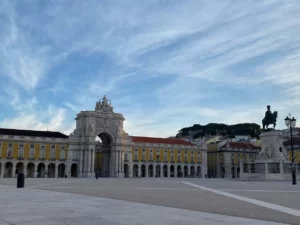If you love to walk but are intimidated by the ups and downs of the city, this Power walk in Lisbon is for you. Ideal for those who want to stay fit on their holidays or just wish to enjoy a walk by the river.
One of my teenage recollections was the brilliant idea a couple of friends and I had: To walk from school (about 500 meters from Santa Apolónia Station) to Belém. Although we were impressed we were able to finish it, along the way we cursed each other for the lousy plan, for the clothes we were wearing (not suitable for the heat and for walking) and we promised to never do it ever again.
Back then, in the late 1980s, the only way to get to Belém from Santa Apolónia Station was to go alongside the busy roads, hardly ever seeing the river. We were proud of walking almost 9 km, but there was nothing fun about it besides one of us jumping into a pound in Santos’ garden because she couldn’t stand the heat (we were about 15 years old at the time).
Power walk in Lisbon: alongside the river from Santa Apolónia to Belém
My 15-year-old self would be surprised because walking from Santa Apolónia to Belém has become one of my favorite routes to walk in Lisbon. Lisbon has changed immensely from the 80s and now there is a path alongside the river that makes this roughly 7 km walk a really nice exercise or just a pleasant stroll. It’s quite even, with no hard climbs and you can do it walking or riding a bike. The benefit is that throughout this route, there’s a lot to see and enjoy.
Important information
Distance: 7km
The best time of the day: early morning or in the evening.
Advice: comfortable shoes
Path: Linear. Possible to cut the walk short at specific points (indicated in the text) and return by public transit.
Starting Point: Santa Apolónia.
End of the walk: Estação Fluvial Belém.
Major Attractions along the way
Santa Apolónia – Recently painted red, the Train Station of Santa Apolónia was once the central train station in Lisbon. Part of the building houses a hotel now.
This is our starting point, walking closer to the river as we can, we have a view of the river Tejo (Tagus) to our left and to our right the hill of Alfama. From here you will be able to see the Panteão (nearby the Flea market).
Cruise Ship Terminal – designed by the award-winning architect Carrilho da Graça, the building was inaugurated in 2017.
After the Terminal there’s a new path, recently opened to pedestrians. There are several small bars overlooking the harbor and even if you are just starting and depending on the time of the day, you can have a break and take a look at the traditional ships docked at the harbor.
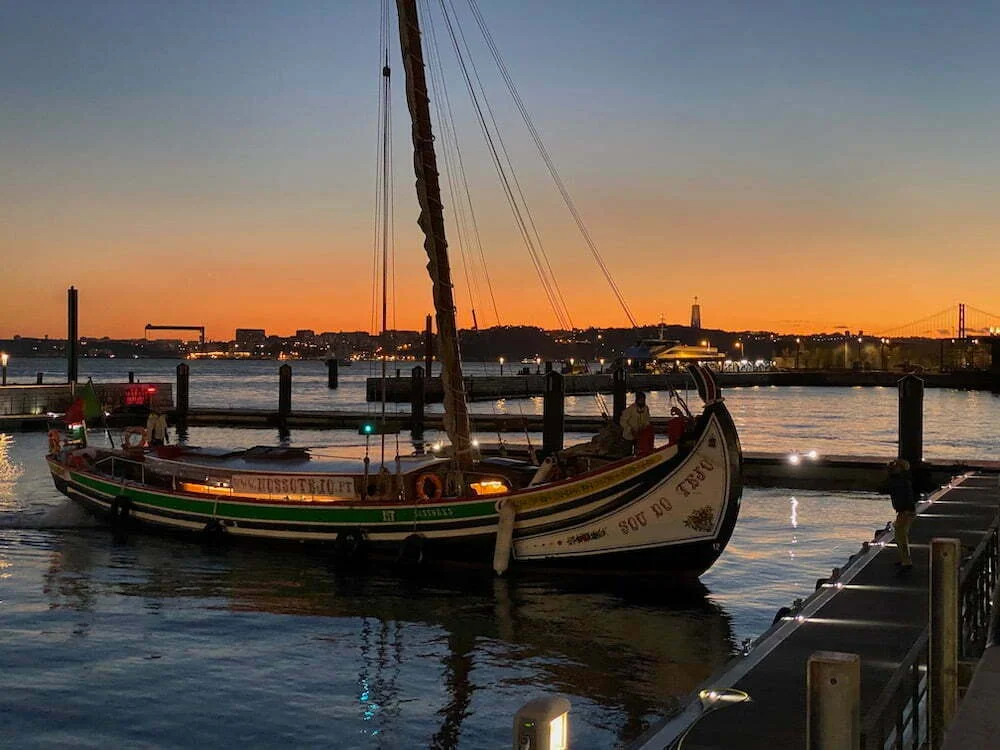
Estação Sul e Sueste – Not to be missed, the Art-deco building was built in the 1930s and was recently renovated and opened as a terminal for boat tours. Before the railway was constructed underneath the 25th April Bridge, the only way to go south by train was to take the ferry from this station. If it’s open, go inside and see the river from the glass arches.
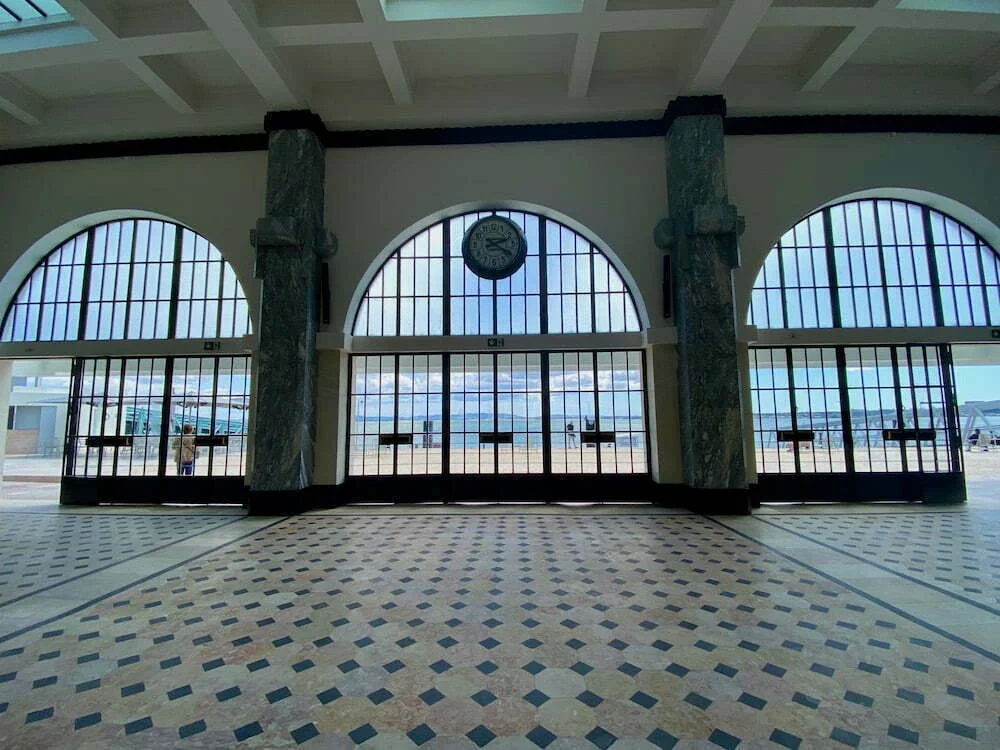
Praça do Comércio – The magnificent Commerce square was built after the great Earthquake of 1755. This can be a starting point as well. From here to Belém is about 6 km.
The following buildings you will see after the Praça were once the docks where the ships of the 15th and 16th were built in Lisbon. You can still see the part of the original dock.
Cais do Sodré – The train station connecting Lisbon to Cascais. If needed, the train station has public rest rooms and a supermarket in case you need to buy water. If it’s not needed, try to go further around the station, keeping the station to your right and the river to your left. This is where it gets confusing because you have to walk along another ferry station and after the parking spot, you will find the river again — through a narrow street. It looks suspicious, but don’t worry, it’s safe.
Several bars and discos recently opened here. During the day is quite nice, but maybe you want to avoid it if it’s early in the morning after a Friday or Saturday. Party-goers tend to leave the district quite late (or early, depending on the point of view). If it bothers you, follow the main road.
There is a path where you need to leave the river and follow along the road. A stretch of the Lisbon Harbour still operates here, so access is limited. The path goes along the ships and boats until you reach the District Alcântara – very close to the Bridge.
Alcântara
If you wish to end the walk here, it’s possible to catch the train back to Cais do Sodré or take a bus. You will find a passage underneath the road and train tracks before crossing to the parking spot in Alcântara. But think twice before ending. The path from this point is the most scenic and easy to walk.
Follow as much as possible the road closer to the river, you will find the Docas – a strip of old warehouses transformed into restaurants.
Bridge 25th April – There’s nothing like going below the 25th April bridge, it’s quite impressive. Inaugurated in 1966 is known today as the date of the Revolution that ended the Dictatorship of António Oliveira Salazar.
Not far from the bridge there is an art installation, a swimming pool with the shape of Portugal, designed by Joana Vasconcelos.
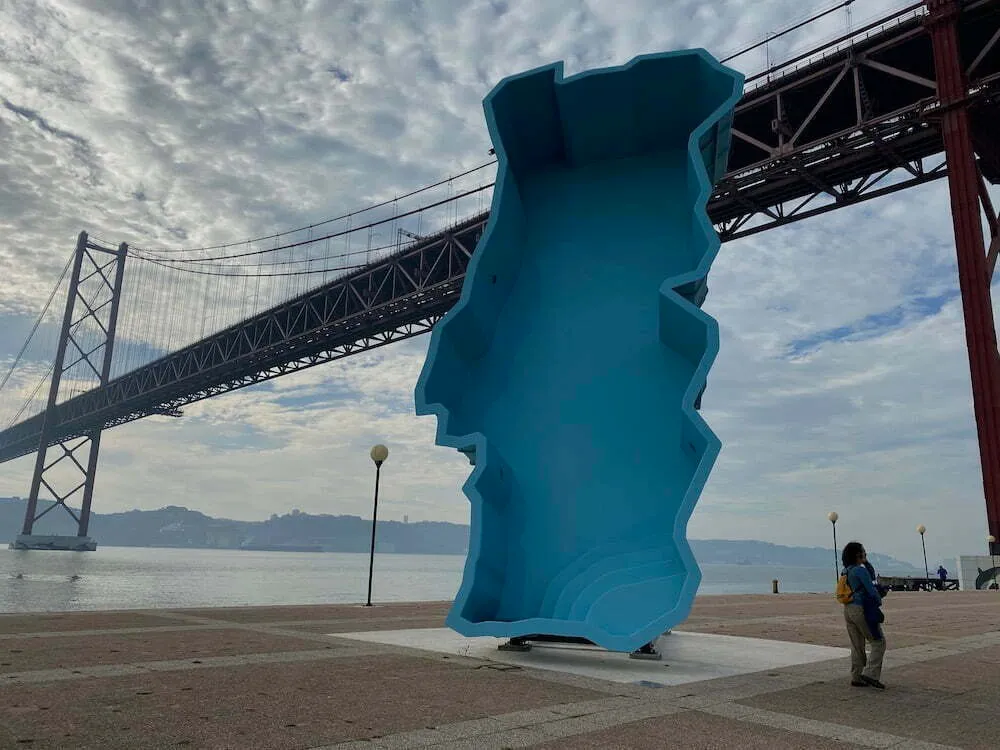
From the bridge, you have a stretch unimpeded and a nice view of the river. Note that the river Tejo is narrower and you can feel the ocean breeze. The Atlantic ocean is not that far.
MAAT – Museum of Art, architecture and Technology. Inaugurated in 2016 this interesting-looking building is worth a stop, try to go on the top of the ceiling.

Museu da Electricidade – the old power station of Lisbon, the redbrick house is also a museum, the electricity museum.
The end
Estação Fluvial de Belém – The ferries depart from here to two small commuter towns. Our power walk ends here, but you can go further.
What to do after this power walk?
After this Power walk, are you hungry? Take the ferry to Trafaria or Porto Brandão. Two small towns overlooking Lisbon from the south bank of the river. My favorite is Trafaria where you can find a few nice fish restaurants and if you are on a bike, you can go further and drive to the beach.
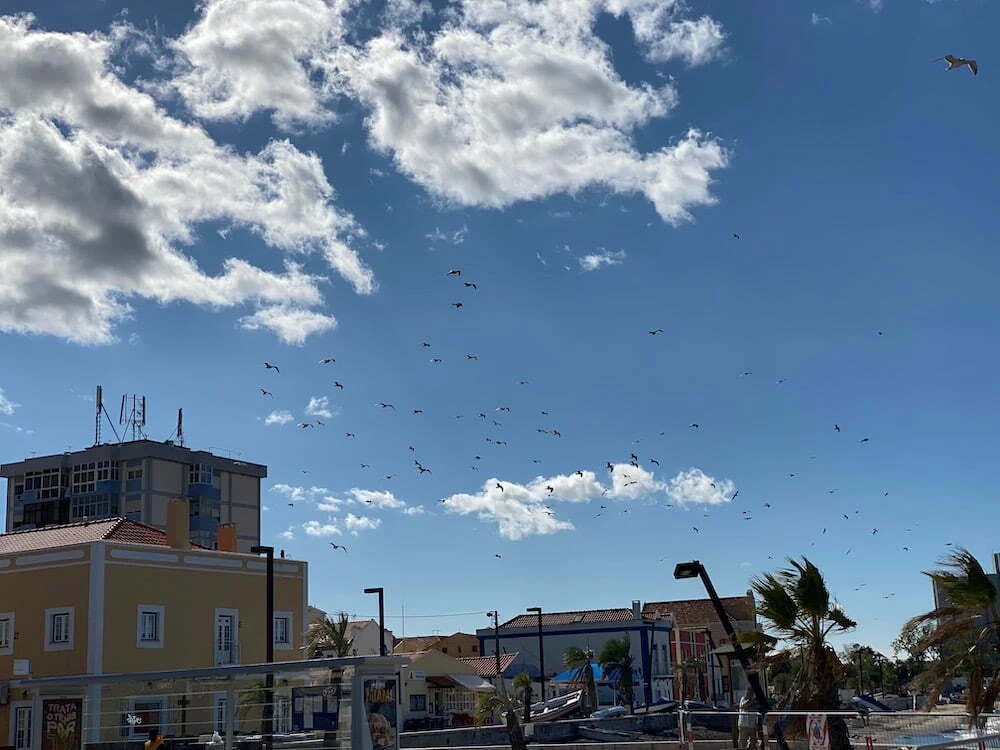
If it’s not enough, you can walk further along the river and visit the Belém area: this is the district where you find the most important monuments of Lisbon regarding the Maritime expansion of the 15-16th centuries.
Want more information about the walk? Leave a comment below. If you prefer an in-depth guided tour of this route, send us a request by email to check our tour in Belém.



